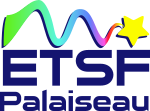| Author | |
|---|---|
| Keywords | |
| Abstract |
Phase change materials possess a unique combination of properties, which includes a pronounced property contrast between the amorphous and crystalline state, i.e., high electrical and optical contrast. In particular, the latter observation is indicative of a considerable structural difference between the amorphous and crystalline state, which furthermore is characterized by a very high vacancy concentration unknown from common semiconductors. Through the use of ab initio calculations, this work shows how the electric and optical contrast is correlated with structural differences between the crystalline and the amorphous state and how the vacancy concentration controls the optical properties. Furthermore, crystal nucleation rates and crystal growth velocities of various phase change materials have been determined by atomic force microscopy and differential thermal analysis. In particular, the observation of different recrystallization mechanisms upon laser beating of amorphous marks is explained by the relative difference of just three basic parameters among these alloys, namely, the melt-crystalline interfacial energy, the entropy of fusion, and the glass transition temperature. |
| Year of Publication |
2007
|
| Journal |
JOURNAL OF MATERIALS RESEARCH
|
| Volume |
22
|
| Number of Pages |
2368-2375
|
| Date Published |
SEP
|
| URL |
http://dx.doi.org/10.1557/JMR.2007.0301
|
| DOI |
10.1557/JMR.2007.0301
|
| Download citation |
Phase change materials: From structures to kinetics
Developed & Designed by Alaa Haddad. Customized by ETSF Palaiseau © 2025.
